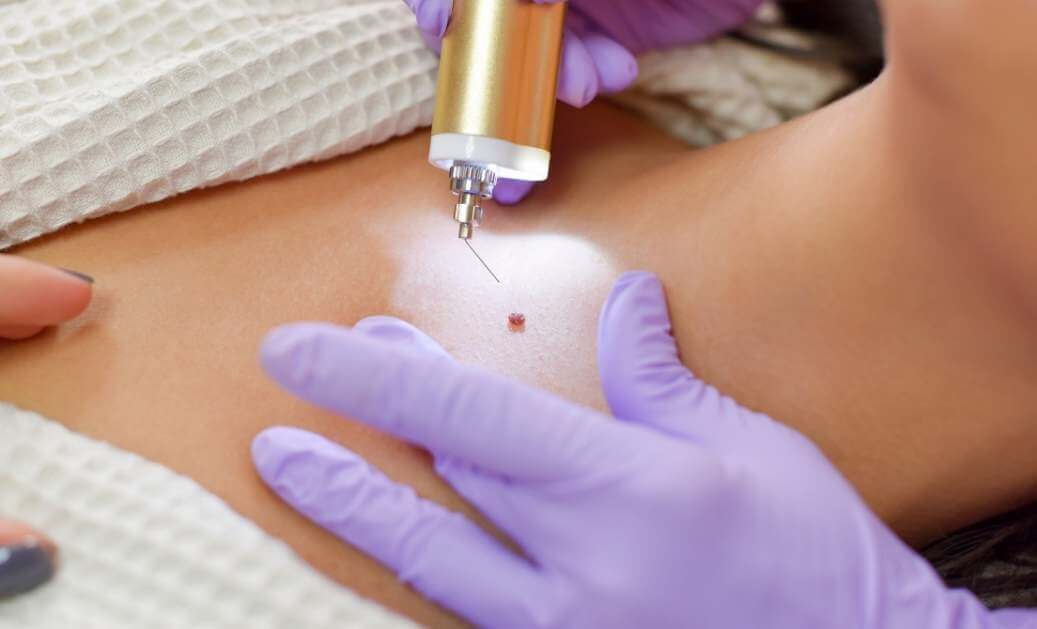
Warts and moles are common skin conditions recorded by cultures across the centuries. Over the years, different groups explained their appearance in a different way. While treatments options have evolved over the centuries – less folklore-based treatments and more modern technology – myths still exist around the best ways to remove these unwanted skin tags and spots from the skin.
To help our patients better understand their treatment options, here’s what you need to know about today’s wart and mole removal.
Warts and moles are removed the same way
False.
Like any other cosmetic condition, the techniques used to treat warts and moles varies by the skin condition. However, new technologies like laser treatment and cryotherapy have been shown as valuable treatment options for each condition. Consulting with a specialist is the best way to determine which solution is right for reaching your cosmetic goals. If subtle volume is your goal, our guide to the different types of lip fillers breaks down textures, longevity, and recovery in plain language.
Surgical removal is the only way to get rid of warts
False.
Warts come in all shapes, sizes, and degrees of stubbornness – while some may be highly receptive to topical treatments, others require a more invasive, professional approach. Furthermore, surgery isn’t the only option for patients with, especially resilient warts. At our dermatology practice in Oakville, experienced specialist Dr. Sapra offers several different forms of non-surgical alternatives, including cryotherapy and laser treatment in order to remove stubborn warts. And if loose skin on the legs keeps you from feeling your best, learn how a thigh lift can smooth and sculpt the area with minimal downtime. The non-invasive options can lead to reduced recovery time for patients. For concerns below the waist, see how a precise labiaplasty can relieve discomfort and restore confidence.
Once removed, warts never come back
Half false.
Benign warts that appear on hands and feet are caused by the human papillomavirus. This is a latent disease, meaning that it can appear suddenly then go dormant. The same is true for warts they cause. For some, once the wart is removed it is gone forever. For others, warts may re-emerge months or even years after they’ve been removed. The best way to help reduce the likelihood of reappearance is by boosting your immune system with plenty of exercise and vitamin C intake. For patients with frequent wart outbreaks, our specialist may work with you to identify a topical maintenance treatment.
The best form of mole removal is surgery
Half true.
While surgical mole removal has been around for decades and is an effective treatment, laser-based treatments have become a popular alternative in recent years. Technologies like the Fotofinder Mole Mapping and Nd: Yag laser are going to options for our specialists in Oakville as they allow Dr. Sapra to identify and treat patients with minimal discomfort or downtime. However, these treatments may not be the best solution for all mole types. In these cases where the mole is dark and stands away from the skin, surgical removal via shave or excision can be the better option.
Changing mole shape is indicative of skin cancer
True.
Skin cancer is one of the most common and easily prevented forms of cancer, affecting countless Canadians annually. The appearance of asymmetrical moles with uneven borders that change shape or are multi-colored tend to be the first physical notice that something is amiss. Monitoring your skin closely and being able to identify potentially malignant moles is an important step to healthy skin and protecting your overall well being.
Find the Right Treatment at ICLS
Tired of unwanted moles or warts? Stop by ICLS in Oakville and explore the options available at our state-of-the-art dermatology and surgery center. Experienced dermatologist Dr. Sheetal Sapra will walk you through your treatment options and help you identify the best treatment for your lifestyle. Call today to get started!
